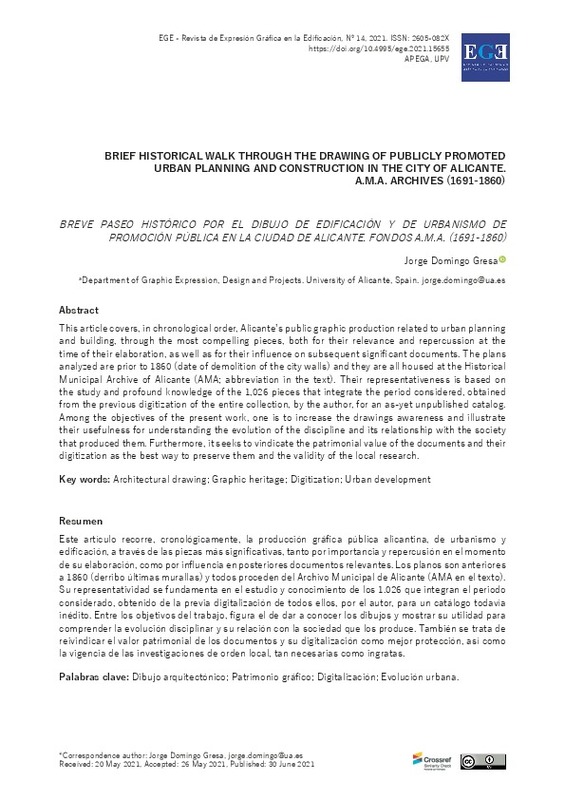JavaScript is disabled for your browser. Some features of this site may not work without it.
Buscar en RiuNet
Listar
Mi cuenta
Estadísticas
Ayuda RiuNet
Admin. UPV
Brief historical walk through the drawing of publicly promoted urban planning and construction in the city of Alicante. A.M.A. archives (1691-1860)
Mostrar el registro completo del ítem
Domingo Gresa, J. (2021). Brief historical walk through the drawing of publicly promoted urban planning and construction in the city of Alicante. A.M.A. archives (1691-1860). EGE Revista de Expresión Gráfica en la Edificación. 0(14):24-48. https://doi.org/10.4995/ege.2021.15655
Por favor, use este identificador para citar o enlazar este ítem: http://hdl.handle.net/10251/168832
Ficheros en el ítem
Metadatos del ítem
| Título: | Brief historical walk through the drawing of publicly promoted urban planning and construction in the city of Alicante. A.M.A. archives (1691-1860) | |
| Otro titulo: |
|
|
| Autor: | ||
| Fecha difusión: |
|
|
| Resumen: |
[EN] This article covers, in chronological order, Alicante’s public graphic production related to urban planning and building, through the most compelling pieces, both for their relevance and repercussion at the time of ...[+]
[ES] Este artículo recorre, cronológicamente, la producción gráfica pública alicantina, de urbanismo y edificación, a través de las piezas más significativas, tanto por importancia y repercusión en el momento de su ...[+]
|
|
| Palabras clave: |
|
|
| Derechos de uso: | Reconocimiento (by) | |
| Fuente: |
|
|
| DOI: |
|
|
| Editorial: |
|
|
| Versión del editor: | https://doi.org/10.4995/ege.2021.15655 | |
| Tipo: |
|









